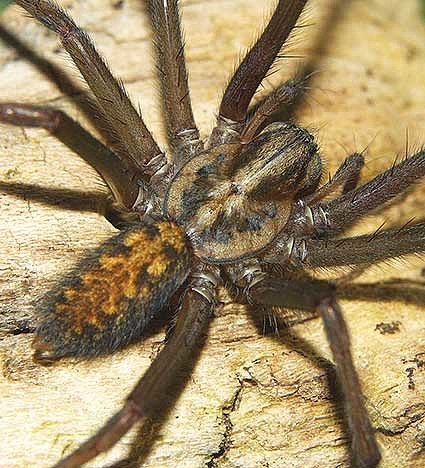Sussex Wildlife Trust: Be afraid, be very afraid...
September 30th, 2019
If you’re looking for a balanced article about house spiders being misunderstood animals that actually help to keep our homes free of flies, then you’re dealing with the wrong man. My name’s Michael and I’m arachnophobic. I know, I know. It’s completely irrational. They are totally harmless. So why, when I find all other animals wonderful, do these eight-legged arthropods make me so terrified that even typing their name sends an involuntary shiver down my spine?
Is my fear, as evolutionary psychologists believe, an in built self-preservation instinct inherited from the cavemen? Is it a response conditioned by a spider-fearing society? Or is it just because spiders have those creepy, long, hairy legs? All I know is, after researching this article, I’ll be sleeping with the lights on ‘til Christmas. I understand that some animals out there actually do have big teeth and need to be feared and respected but they can be cleverly avoided by not going snorkelling at night in the upper Amazon basin. There is no avoiding spiders. They will find you in the one place you thought was safe. Your home.
There are many spider species which have the audacity to swan into our homes uninvited but the real monsters belong to the genus Tegenaria – the house spiders. These spiders love dark, cool places so when humans invented ‘indoors’ they happily followed us inside. There’s an easy way to identify the Tegenaria spiders. If you’re hyperventilating, swearing and sobbing while stood on a chair then you’ve found one.
There are five Tegenaria species but the big daddy of the bunch is Tegenaria parietina, also known as The Cardinal Spider (named after Cardinal Wolsey, who apparently lived in fear of one of the eight-legged horrors of Hampton Court creeping up his cassock). Its leg span can reach a whopping five inches.
Tegenaria are most active in the autumn. The mature males scuttle scarily along the skirting board looking for a bigger, even more frightening female. After mating, he dies and then she eats him. A simple relationship but suitably horrific. She’ll then saunter around your house, giving you a minor heart attack as she passes by, before finding somewhere dark and cool to hole up until she lays her eggs in the spring. So, to all the spider-lovers out there who come to our rescue with a glass and a bit of card, I salute you. To the rest of us, I have no words of consolation.
Oh, and while you were reading this,I think I saw a really big one crawling behind your sofa.
By Michael Blencowe: Learning & Engagement Officer, Sussex Wildlife Trust.
house spider©Alan Price Gatehouse Studio Sussex Wildlife Trust.
Is my fear, as evolutionary psychologists believe, an in built self-preservation instinct inherited from the cavemen? Is it a response conditioned by a spider-fearing society? Or is it just because spiders have those creepy, long, hairy legs? All I know is, after researching this article, I’ll be sleeping with the lights on ‘til Christmas. I understand that some animals out there actually do have big teeth and need to be feared and respected but they can be cleverly avoided by not going snorkelling at night in the upper Amazon basin. There is no avoiding spiders. They will find you in the one place you thought was safe. Your home.
There are many spider species which have the audacity to swan into our homes uninvited but the real monsters belong to the genus Tegenaria – the house spiders. These spiders love dark, cool places so when humans invented ‘indoors’ they happily followed us inside. There’s an easy way to identify the Tegenaria spiders. If you’re hyperventilating, swearing and sobbing while stood on a chair then you’ve found one.
There are five Tegenaria species but the big daddy of the bunch is Tegenaria parietina, also known as The Cardinal Spider (named after Cardinal Wolsey, who apparently lived in fear of one of the eight-legged horrors of Hampton Court creeping up his cassock). Its leg span can reach a whopping five inches.
Tegenaria are most active in the autumn. The mature males scuttle scarily along the skirting board looking for a bigger, even more frightening female. After mating, he dies and then she eats him. A simple relationship but suitably horrific. She’ll then saunter around your house, giving you a minor heart attack as she passes by, before finding somewhere dark and cool to hole up until she lays her eggs in the spring. So, to all the spider-lovers out there who come to our rescue with a glass and a bit of card, I salute you. To the rest of us, I have no words of consolation.
Oh, and while you were reading this,I think I saw a really big one crawling behind your sofa.
By Michael Blencowe: Learning & Engagement Officer, Sussex Wildlife Trust.
house spider©Alan Price Gatehouse Studio Sussex Wildlife Trust.
Comments (0)
No comments have been submitted yet.Why not be the first to send us your thoughts
Leave A Comment
Thank you for your comments, they will appear shortly once approved.
Recent Posts
Have You Seen...






